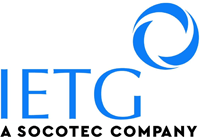The Causes and Effects of Different pH Levels
We have all heard of pH, but what is it?
pH is the abbreviation for ‘potential of Hydrogen’. It measures how acidic or alkaline a substance is and is plotted against a scale from 0 to 14, with 7 being classed as neutral. Levels below 7 indicate acidity, whilst those above 7 signify a basic (commonly known as alkaline) solution.
Maintaining balanced pH levels is crucial in ensuring the environment remains healthy and safe. This is where we come in!
What causes pH imbalances in water?
There are plenty of factors that can contribute to differing pH levels. Here are some of the biggest contributors:
Industrial processes:
Many industries, like the pharmaceutical sector, produce large amounts of wastewater as a byproduct of their process every single day. They use chemicals that will alter the water’s pH, especially if incorrectly disposed of.
Natural processes:
Even something as simple as rainwater can cause imbalances in pH levels. Rain can have acidic properties (some people call it acid rain) due to dissolved carbon dioxide, which in turn decreases a water’s pH. Increased dissolved carbon dioxide levels are a byproduct of higher amounts of pollution.
Agricultural processes:
Fertilisers and pesticides are renowned for being used in farming, but the runoff from these products is severely polluting our water sources. Depending on the type of products used, the runoff can either increase or decrease water pH.
What are the effects of pH imbalances?
We’ve discussed some of the causes of differing pH levels – now let’s get into the effects that negatively impact the environment.
Harm to living organisms:
Aquatic animals and plants thrive within a specific pH range. When the water deviates from this, it can disrupt their natural biological processes and lead to them dying. Unfortunately, they will decompose and further cause the pH levels to change.
Infrastructure corrosion:
Whether the pH level of the water is too acidic or basic, it can cause pipes and equipment in water sources to corrode. This leads to costly damages and repairs, which haven’t been prepared for.
So, what pH levels are considered as corrosive?
When the pH is less than or equal to 2, and greater than or equal to 12.5.
Treatment efficiency:
Wastewater treatment plants rely on specific pH levels to effectively treat the bacteria levels. Imbalanced pH levels hinder these processes, which in turn negatively affects the water released into local waterways. The water here is meant to be used again as drinking water.
How can IETG help prevent pH imbalances?
At IETG, we have played a leading role in the ongoing development of data collection for Urban Pollution management and Water Framework Directive studies.
We have the service ‘Water Quality Monitoring & Sampling’(https://www.ietg.co.uk/service/water-quality-monitoring-sampling/) which collects data about wastewater networks. We have one of the largest fleet of industry-leading YSI multi-parameter Water Quality Sondes.
The sondes take pH measurements and auto-samplers can be triggered remotely. Samplers are refrigerated to preserve any samples collected. All monitored data is thoroughly examined daily to ensure any changes are picked up promptly to prevent problems from arising.
Get in touch today to see how we can help you monitor water pH levels.

 SOCOTEC UK, a market leader in testing, inspection, and certification (TIC) services for the construction and infrastructure sectors, is pleased to announce the acquisition of IETG, specialists in flow level, temperature, and water quality monitoring, and 40SEVEN, renowned for their industry leading expertise in land and utility surveying services.
SOCOTEC UK, a market leader in testing, inspection, and certification (TIC) services for the construction and infrastructure sectors, is pleased to announce the acquisition of IETG, specialists in flow level, temperature, and water quality monitoring, and 40SEVEN, renowned for their industry leading expertise in land and utility surveying services.























